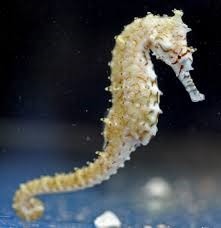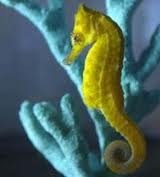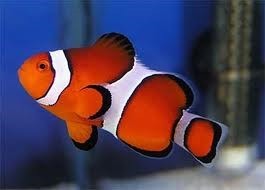Description
The Western Spiny Seahorse is a relatively large slender species with a high spiky coronet. It is brownish to greyish with fine white, yellow, orange or brown scribbly or net-like markings and 5-6 distinctive dark irregular stripes across the snout. The dorsal fin has a thin dusky marginal line. Endemic to tropical waters of Western Australia, from Shark Bay, north to the Dampier Archipelago. The seahorse lives amongst sheltered algal-covered reefs or seagrass beds from about 10 to more than 30 m.
Temperature
In the ocean your seahorse is found in tropical waters that are typically around 26ºC. In captivity, your seahorses should be kept at temperatures between 24 and 27ºC. Prolonged temperatures outside this range, as well as any sudden change in temperature, should be avoided. Rapid changes in temperature in a short time is one of the major causes of poor health in seahorses.
Tanks and Tank Mates
Seahorses will thrive in any system that provides fair to excellent water quality without excessive water currents. Hang on, sub-gravel and canister filters are all suitable. And we recomend the use of a protein skimmer. Regular water changes (at least 20% every two weeks) and water testing are necessary for these systems. Water currents are excessive if the seahorses can’t catch their food as it swirls past. We recommend a minimum tank size of 80 litres as the water temperature does not change quickly with changing room temperatures.
The tank should contain something for the seahorses to attach to, preferably something they can wrap their tails right around, such as thin rope, fake (or real) vegetation, small driftwood branches or thin branching corals.
It is best to choose fish species that can be kept in the same tank with seahorses. These include the closely related pipefish, which are colourful and constantly active, and peppermint shrimp, which perform an important task in eating excess food and so help to keep your seahorse tank clean. However, if you wish to keep them with other marine fishes, there are some that must be avoided. Aggressive fishes, such as damsels and clownfish, will stress your seahorses by beating them to their food or even attacking them. Almost all anemones, including Aiptasia, will sting your seahorses causing sores and/or death. Large nocturnal crustaceans, such as crabs, will catch and eat smaller seahorses while they rest at night.
Feeding
In the sea, seahorses are used to feeding on live shrimps and small fish. When taken from their natural environment and placed in an aquarium, wild seahorses are reluctant to eat dead food and often die of starvation soon after purchase. In contrast, tank-bred seahorses are likely to have been reared on a mixture of frozen mysis shrimp and brine shrimp. It is very important that you feed your seahorses a combination of mysis shrimp and brine shrimp that have been enriched with multi-vitamins. With this diet, your seahorses will stay healthy and grow quickly.
Colour
It is not possible to predict the final colour of your seahorse as they resemble chameleons, in that they can change colour to suit their surroundings. When they leave the breeding establishment they may be bright yellow or orange but this colour may change in the retail shop and again when you get them home. As a general rule, in poorly lit tanks, they will go dark in colour (even black if the tank is very dim) so well lit tanks are recommended. It is also recommended to have some brightly coloured tank ornaments to encourage the seahorses to try and blend in.
Sex
Your seahorses have some unusual sexual habits. Unlike most other creatures, it is the male who becomes pregnant! The female gives her eggs to the male who collects them in his pouch, fertilises and nurtures them, and finally gives birth to them. The males are easily distinguished from the females by their pouch and the more prominent keel on their abdomen.



